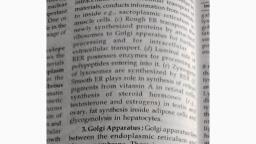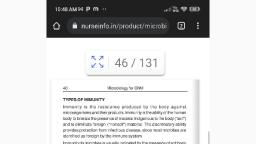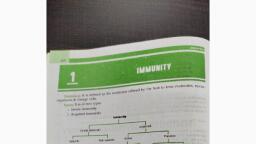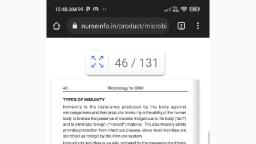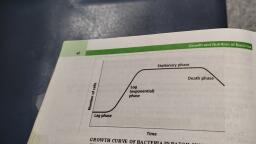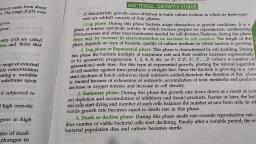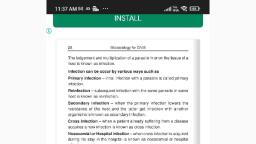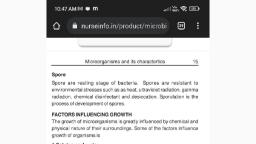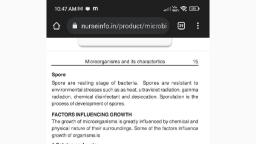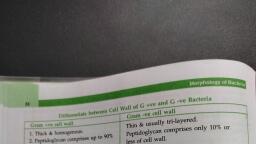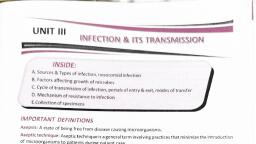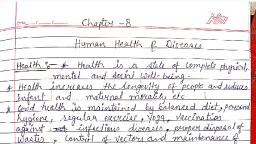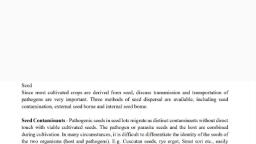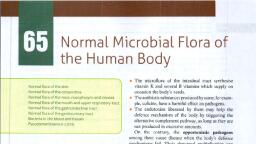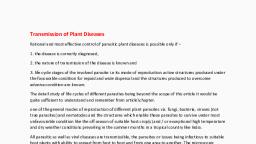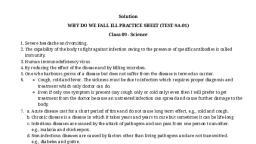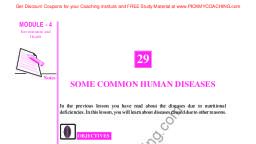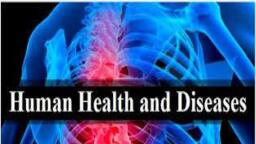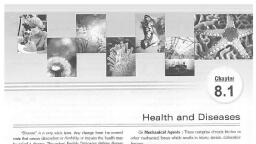Page 1 :
organisms in bodily parts 9,, to disease through a Variety, , , , multiplication of pathoaen ee, duce subsequent tissue injury & P, anisms., NFECTION:, The initial or firs!, When the bod, , wasion &, , Definitiond™, tissues which may Pro, of cellular or toxic mec, , CLASSIFICATION OF |, , 1. Primary infection, , 2. Secondary infection + :, a new organism may, , used by an infecting organism,, , f host is lowered by pre-existin, called secondary infection, 8, , called reinfection., , t infection ¢, Ly resistance 0, set up a disease,, , the same organism is, infection that does net cause or produce any, known as inapperant or subclinical infection., , wing infection, some pathogenes may remain in dormant, (latent) form in host tissues & when host resistance is lowered, they multiply & produce, , clinical disease. Such infection is called latent infection., , » When a new infection from patient, it is called cross infection., Cross infection acquired in hospitals is, , infectious disease,, 3. Reinfection Subse, , 4, Inapperant or subclinic, detectable manifestation is, , 5. Latent infection Follo, , quent infection by, al infection AN, , 6 Cased nen or healthy staff carrier is set up, an already diseased person,, 7. Hospital acquired or noncomial infection, called nonocomial infection., 8. Atypical infection: Infection where the typical or characteristic clini, ; J istic cl i, tions of a disease are lacking is called atypical infection. oo oe, 9. Focal infection A condition in which an i i i, r an infe i, eral effect in body is called focal infection. ee aS produbce 4 a, , 10. Tat 0 nm that res) ‘om unster, atrogenic or physician induced infection id, ¢ The infection that results fr terilize, , instrumentation, drug therapy, hi ing i i, ure By beens py, handling infective specimen or any diagnostic proce, 11. Acute infection -An infection which lasts for a r ive | fi, ver C elati ely short time (few days t, ‘0, , 12. Chronic infection, , eg. TB. ection wach lasts for a long time (over months & years), years, , demonstrated., , 16, Opportunistic i : :, infectionAn i, but become pathogenic when ae ection with, , agent cannot be, , body’ organisms which, Y's defense mechanisms ae bamies, romised.
Page 2 :
17. Patent infection:An infection in whi ‘ 5,, discharges of the patient. ich the infectious agent can be demonstrated ir, , 18. Super infection:A second, encing an infection with anoth, , 19. Terminal infection An acute i :, ening Coat infection Occurring near the end of a disease and ofter, , 20. Transmissible also called contagi 4 ‘ : . ;, maitiee Gomsone anne ace ee infection‘An infection capable of being trans, CARRIER, A person who harbors the, called carrier., Types:, , 1. Healthy carrier:A carrier who harbors th, disease caused by it. e pathogen but has never suffered from, , infection Occurin;, , er agent '§ 1N an animal which is already experi., , ism without suffering from any disease is, , 2. Temporary carrierA carrier in which carrier state lasts for less than 6 months., 3. Chronic carrier:A carrier in which ¢, , c arrier state lasts for indefinite period of several, years or sometimes rest of life., , 4, Paradoxical carrier:A carrier who acquires pathogen from another carrier., , 5. Contact carrier:A carrier who acquires pathogen from a patient., , 6. Convalescent cartier:A carrier who, harbor pathogen in his body., , Sources of Infectionv, , has recovered from the disease but continues tc, , Infection may be acquired endogenously (infection caused by body’s own normal flora’, or exogenously (infection caused by organism from source outside the body)., , A. Endogenous sources These sources lead to endogenous or autoinfection. The source, of infection is body’s own normal flora which may behave as pathogenes outside their nor., mal habitat e.g., E.coli, a normal flora of intestinal tract may cause urinary tract infection, Strep. viridans, a normal flora of mouth May cause infective endocarditis., , B. Exogenous sources, , 1. Man (cases & carriers) Man is himself the commonest source of infectoin who may, be a patient or a carrier., , Patient Infections like AIDS, syphilis, gonorrhoea, pulmonary tuberculosis, leprosy, , pertusis, hepatitis B, mumps, measles, polio, influenza may be acquired exclusively from, patients suffering from these diseases., , Carriers Carriers also serve as important sources of infection e.g., meningococcea, , Meningitis may be acquired by a person which becomes contaact carrier (carrier who ac, quires pathogenes from patient)., , 2, Animals (cases & carriers) ‘There are some pathogens which are capable of causing, disease in both man & animals. Therefore, animals may act as source of infection of sucl, diseases which may be acquired by direct contact with animal, animal bite or ingestion 0
